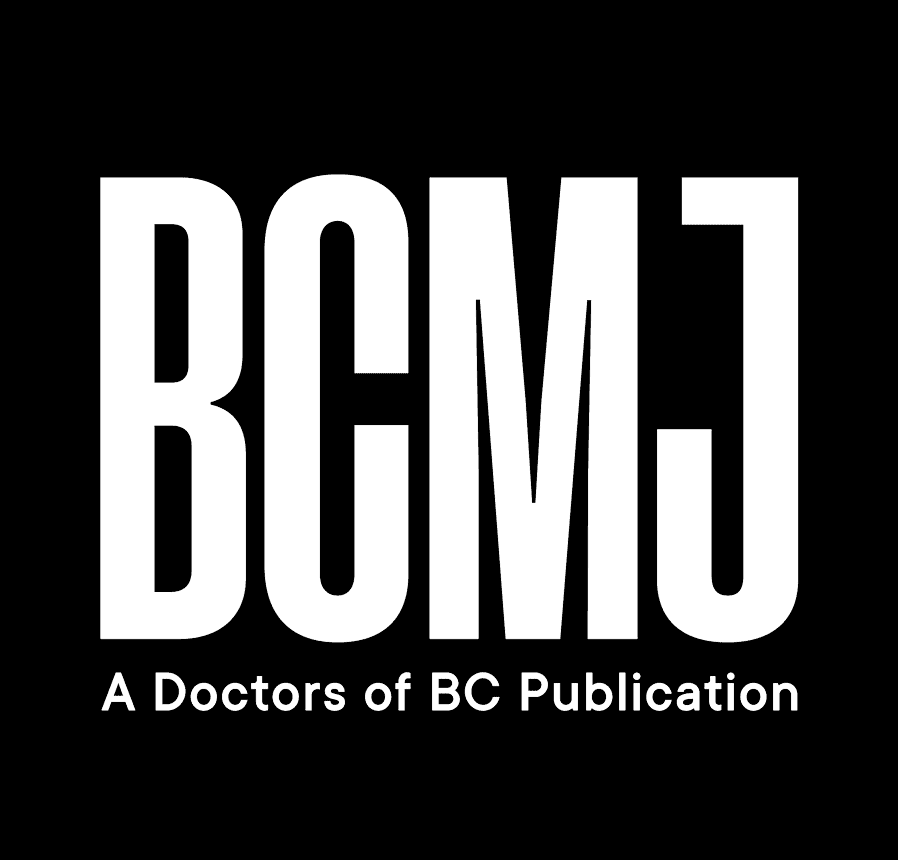Re: Rural privileging
I am writing in response to the article on privileging and credentialing through a rural lens [BCMJ 2024;66:334-339]. I am a retired rural physician, having worked in family practice in Quesnel for 40 years and then assisting in the operating room for another 17 years before retiring at age 85. After coming to Canada following 3 years doing house jobs in Brighton, UK, I was lucky to do a 1-year anesthesia residency in Vancouver before moving to Quesnel.
In 1965, there was no BC Ambulance Service. The local ambulance, a museum piece from the 1950s, was owned and operated by the local taxi driver. Doctors were sometimes asked to join when they were attending accidents. Additionally, there was no air ambulance, so it was either a military plane from Comox or a plane from West Fraser, a local sawmill. It was with these constraints that we rural doctors needed to work. A selection of cases might cast insight on privileges.
One February morning in the 1970s, a young man was brought in by the BC Ambulance Service, having been found in a snowdrift, where he had spent the night on his way home from the bar. It had been −20 °C overnight. He was unconscious, with a rectal temperature of 29 °C. Such cases require careful warming with hot air so the cold periphery does not flood in, reducing the core temperature and causing cardiac arrest. Our best option was a hot bath and to watch for cardiac arrest. His hands were terrible—solid blocks of ice—leaving me with images of eventual amputation through the wrists. In my mind, regular stellate ganglion blocks might salvage some of the tissue. Several days of these were done on the then-conscious patient. I was rewarded with fingers enveloped by brown blisters—all of them. I did not see them after that, but I was told that pink fingers eventually emerged. How would that fit into the suggested version of privileges?
Another case was a 40-year-old woman with Guillain-Barré syndrome who needed 10 days of ventilation. We successfully managed without an ICU, and she is now in her 80s.
On another February morning in the 1970s, as mentioned in a book he wrote, my partner, Dr Alex Holley, asked me to accompany him to Vancouver with a patient we had been caring for with suspicion of a ruptured arch of the aorta following a car accident. Alex had phoned around for air transport. There was poor weather in Comox, but West Fraser brought its small plane from Williams Lake. We went with the patient to Vancouver, along with blood, intubation, and ventilation if needed, through a bumpy descent to the airport due to stormy weather. Two weeks later, the patient came in to the office to thank us and boast of his new aortic arch.
About that time, we had a man who had fallen and broken his neck at C1. Another of my partners happened to be with him at the time. He did resuscitation, and I later put skull tongs on and ventilated him. I accompanied him to Vancouver in the Royal Canadian Air Force’s Buffalo from Comox—but at no higher than 5000 feet as we came down the Fraser Canyon, because the plane was not pressurized. With ventilation and traction, the physical challenges could be interesting. Unfortunately, the patient died a few days later.
One more case. One quiet Saturday afternoon in the emergency department, a worried-looking older man with a clearly rustic lifestyle came in and said, “I wonder if you can help me. There’s no vet in town and I have a dog with porcupine quills.”
“Okay, things are quiet now,” I replied. His dogs were cougar hunters! This was a 70-pound, shaggy, fierce-looking hound with a face, mouth, and head patched with barbed quills. Anesthesia would seem to be indicated, but my training had not covered dog anesthesia. I had heard that ventricular fibrillation could be a problem. After some thought, I bypassed the need for IV and inserted two pediatric pentobarbital suppositories. This was followed by some patience and a third insertion, after which sedation ensued, and the quill extraction began with pliers. With the face and head cleared, we turned our attention to the mouth, tongue, and inner cheeks, all the while wondering when the anesthesia would wear off. The treatment was concluded with the dog recovering. The owner was so happy that he said, “I have another one in the car.” He was given some suppositories, declined the rubber glove that was offered to him, and left happy. Rural medicine!
—John Maile, MD
Quesnel
This letter was submitted in response to “The provincial privileging process in British Columbia through a rural lens.”
hidden
 |
| This work is licensed under a Creative Commons Attribution-NonCommercial-NoDerivatives 4.0 International License. |

